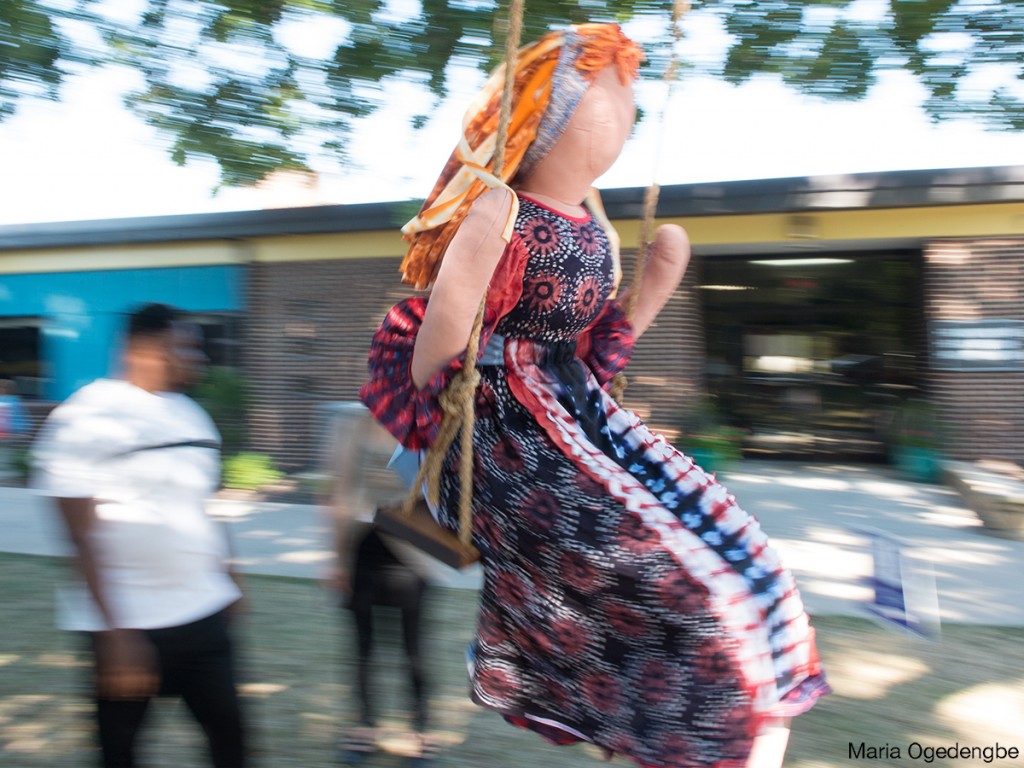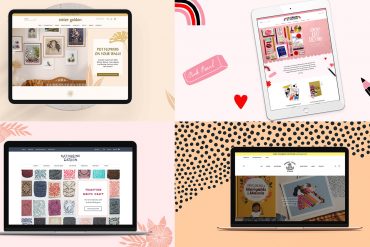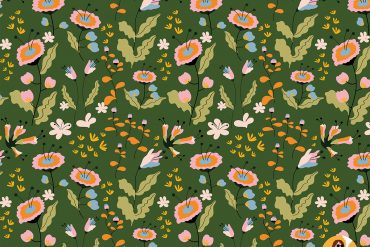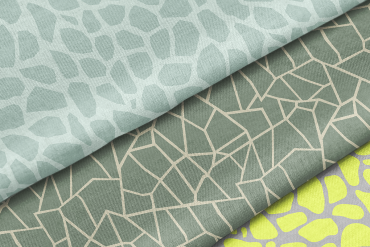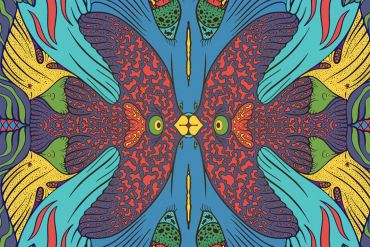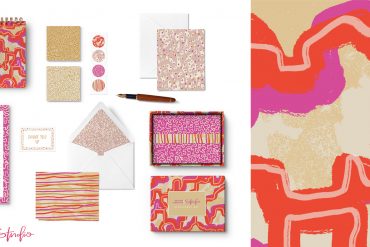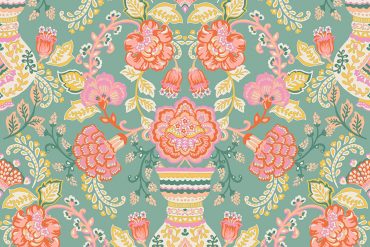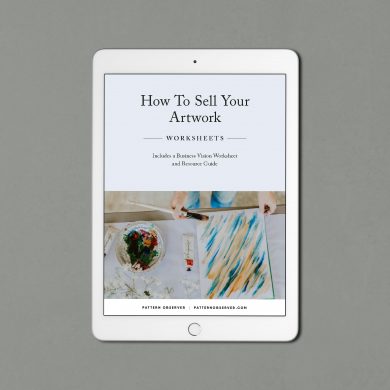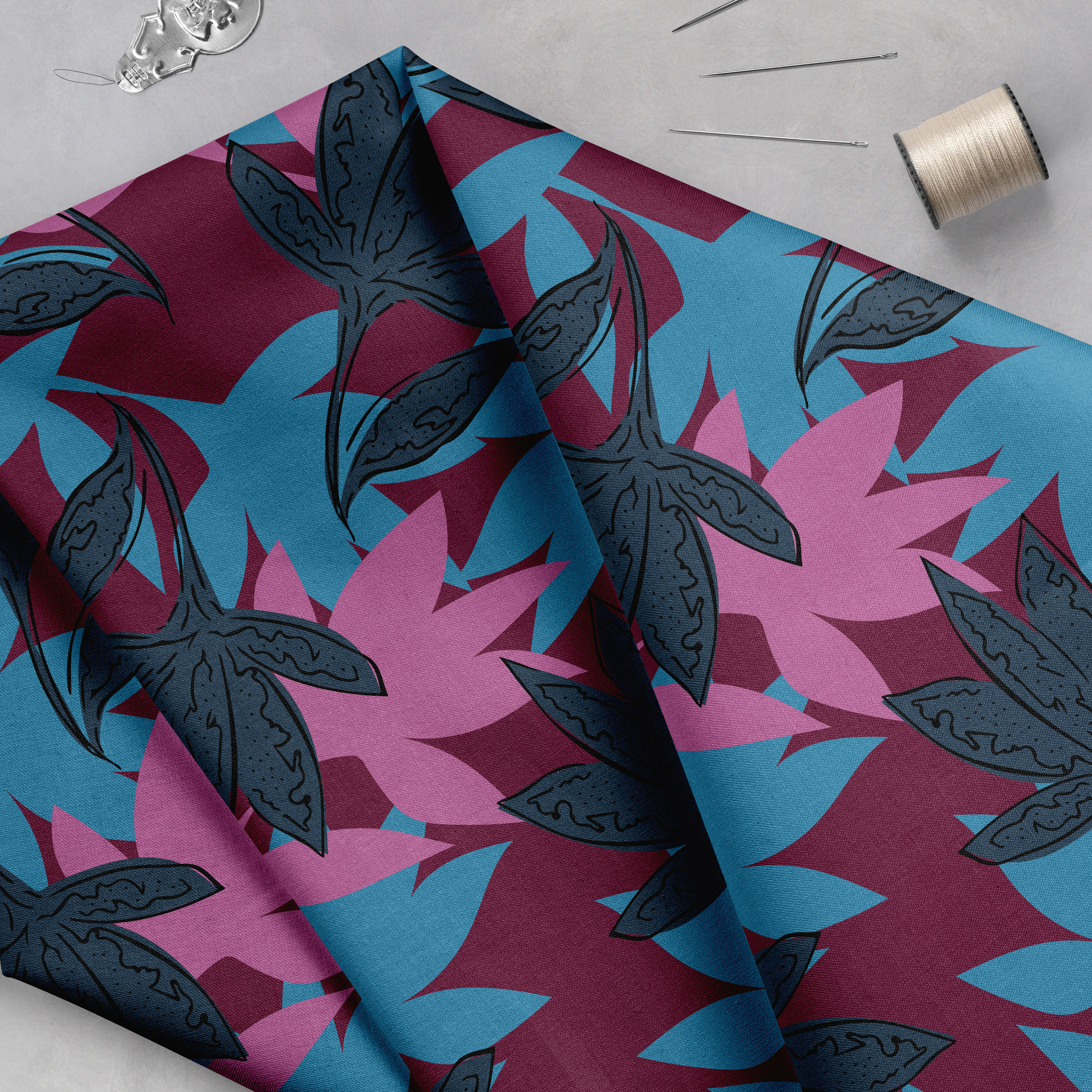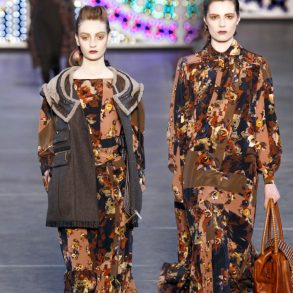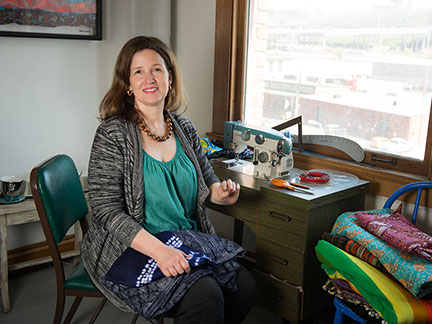
Please tell us about your design background and career path. How did you become interested in African textiles?
My mother is an artist and homemaker, so I’ve always known art and have been familiar with creating things from fabric such as a quilt, curtains or tablecloth since youth through her example (she once sewed a sleeping bag in the shape of an alligator, you crawled in through the mouth!). We used to play a game on family car trips where you’d say, “I’m packing my bag to go to Africa” and then recite a long, growing list of items from memory in turn. I suppose that suggested the idea of going to Africa to me time and again throughout my childhood…
After art school, the range of courses available to graduate students at Yale seemed so vast. I studied the course catalog with the same intensity I’d studied the Sears catalog to choose Christmas gifts as a girl. During the summer when I journeyed from Kansas City to New Haven, it dawned on me that I knew little about African Americans’ experience and that I hadn’t ever had a class taught by a black teacher or professor. So, in addition to art courses, I enrolled in an African American Critical Thought course at the School of Divinity and a course in African literature at Yale College.
Following graduate school, I spent a few summers in the U.K. and stayed in South London where a throng of expatriate neighbors from West African Commonwealth countries filled the high street walkways on weekends. At the time I was working with sumptuous draperies as still life props, and I collected African lace and hand-woven fabrics as painting subjects. I came to know the African shopkeepers including a Nigerian woman, Erelu, who explained that her name was a title – she was the outstanding hostess in her village and carried a ceremonial spoon for special occasions when there.
Author Lizzie Williams describes Nigeria as “Africa for the experienced” in her Bradt travel guide. There are numerous health and safety matters to manage with travel in Nigeria that keep wouldbe visitors at bay… (Maybe that’s a blessing, perhaps the country retains its very distinctive character because foreign visitors are few?). What draws me to Nigeria are parallels I see between fine art painting and hand-dyed textiles produced there. In Nigeria hand dyed fabrics are prized, and study with dyers is considered “industrial training” for university art and fashion majors.
As there weren’t any existing artist-in-residence programs in Nigeria, I developed projects of my own along the lines of an artist’s residency. Over the holidays in 2011-2012 I worked with hand drawn batik and paste resist in Lagos, Oshogbo, and rural Kogi State. In 2013, I spent about 5 weeks working alongside production dyers in Lagos where I learned techniques for printed batik and tie and dye. Then in 2014 I completed a project that involved studying dyeing in Abeokuta which is renowned for its hand-dyed textiles market.
You have a particular interest in Yoruba adire designs. Can you tell us more about this art form?
Part of my interest in studying traditional & contemporary African methods for working with textiles is celebrating what I’ve discovered. Through telling you about adire eleko designs here and in the presentation for the Lab, the audience for Nigerian textiles and culture grows a little wider.
From its cash economy to malaria to intermittent electric service to poor roads, Nigeria doesn’t offer easy access. Yet its cultures hold many lessons for the wider world about optimism, wherewithal, cherishing family, and regard for self-presentation (usually involving handsome textiles). We can get an idea of Nigerian sensibilities through exploring the language of adire.
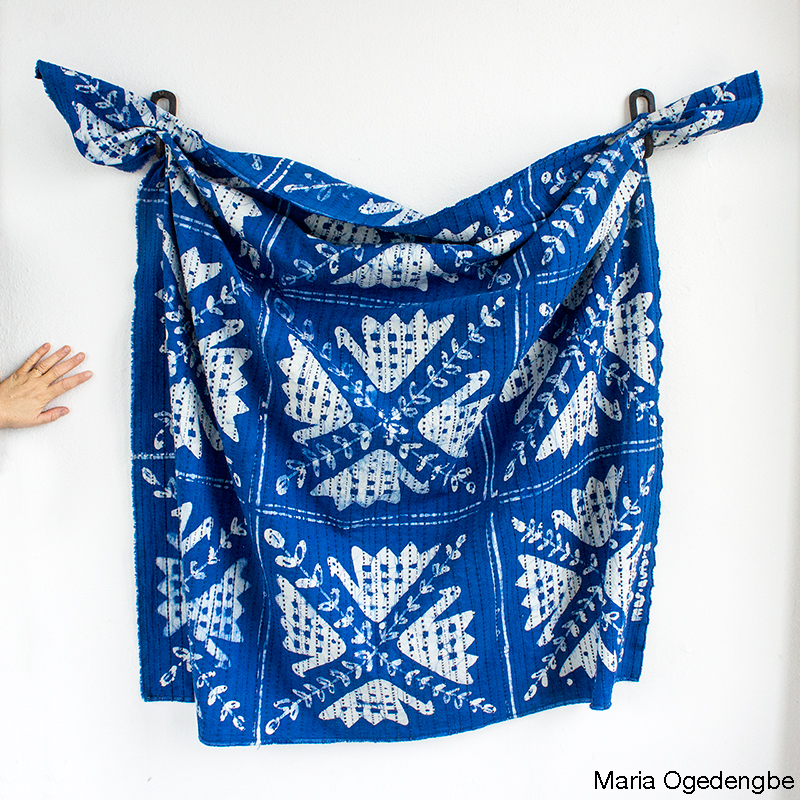
What is your process for creating Yoruba adire designs?
Through working across a variety of disciplines, I see opportunities for combining methods in new ways. I shared the details of one way I’ve created my own rendition of adire motifs with the Textile Design Lab – basically I draw out an image in ink wash, scan, and manipulate it into a pattern in Photoshop. This system can be used to prepare designs for commercial printing or as a way of testing layouts with hand-patterned work.
Do you combine any modern influences with your traditional African textile work?
Yes, for example I recently dyed a 54” square of canvas-like cloth with an adaptation of the Birds Eating Corn motif. This adire design is a reminder to keep valuables out of plain view: if you don’t harvest guinea corn just as it ripens, the birds will eat it. For this piece I worked in printed and hand-drawn batik after planning the layout in Photoshop. The work is called “Canvas / Material” and was created in response to a call for artwork integrating the theme of “dazzling.” After dyeing, I applied rhinestones to point to the idea of scattered valuables as well as the dazzling theme. The work is presented on the wall, suspended by cast hooks, and it’s easy to take down and replace. Through the title, I’m drawing a comparison between a painting on canvas and beautiful fabric – I would like the collector to enjoy the work both as art that hangs on the wall as well as something that can be worn, such as a cloak or shawl.
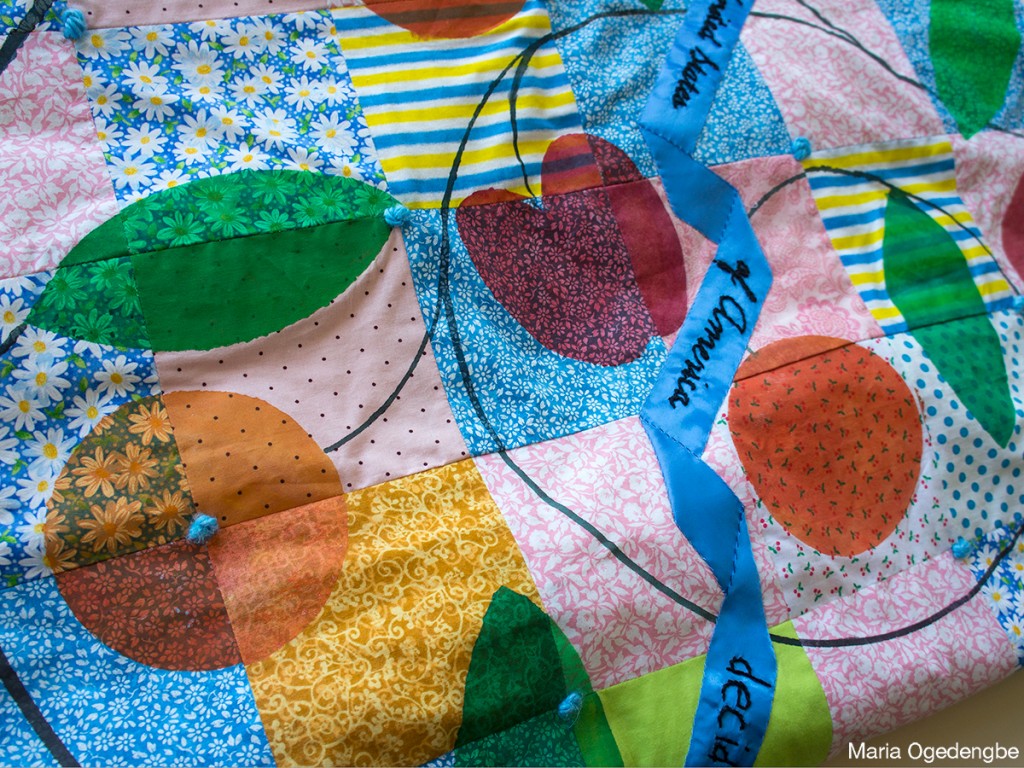
Over the last five years I’ve produced several projects that make use of hand patterned fabrics. I view these primarily as artworks, yet in most cases I’m seeking to cross boundaries between art and textile formats through use of content. One recent project, Love Apple Coloring Test, is a quilt that was patterned with the help of forty-eight 2nd graders through an artist’s residency at the Quincy Signature Art School in Topeka, Kansas. For this, I borrowed subjects from the Coloring Test used as evidence in support of Brown vs. the Topeka Board of Education case that ruled out segregation in U.S. public schools. Through the original test with children of about the same age, it was determined that self portraits of African American students revealed low self esteem related to problems with segregated schools. Love Apple Coloring Test celebrates of the “rainbow” of children attending public school together in Topeka today, and provided students with experience in color mixing and matching including use of a mirror for reference with mixing colors for self portraits. Subjects such as apples, oranges, leaves, mice, and the portraits were worked into a configuration along the lines of a love apple quilt motif (“love apple” is an old fashioned name for a tomato, love apple quilts feature fruit, vines and leaves). Numbered freezer paper stencils for individual quilt squares were cut mechanically using digital files. The stencils were ironed on to fabric squares that the children painted with colors mixed they mixed on their palettes from primaries.
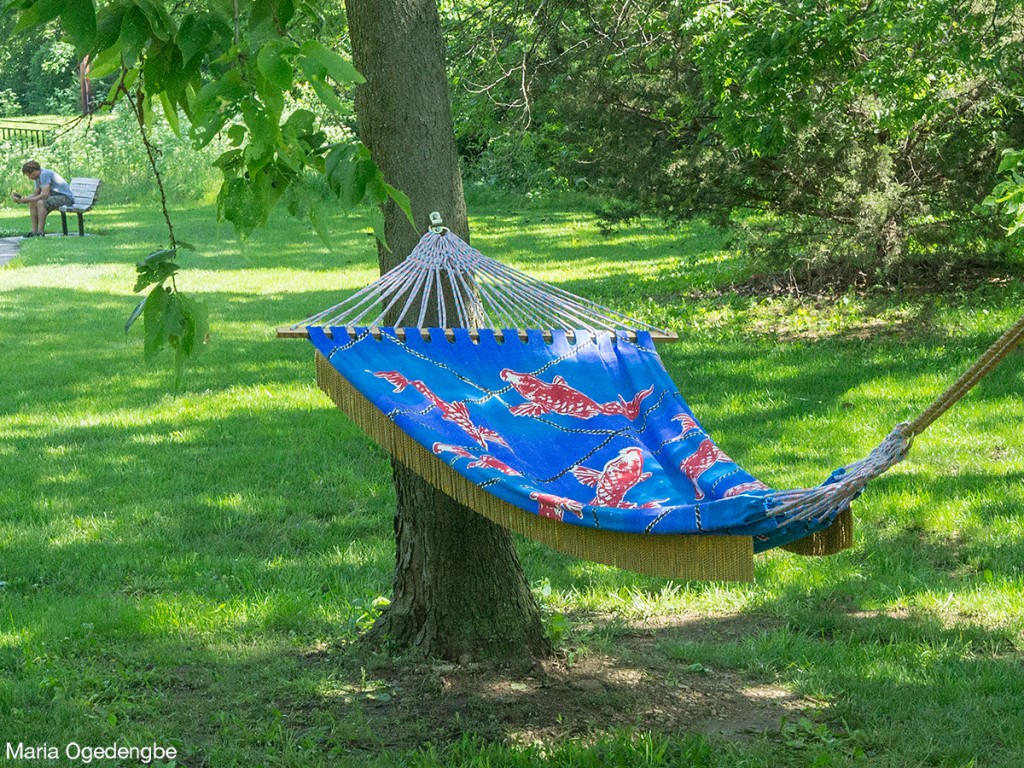
Heaven’s Net is a hammock devised from canvas I painted and printed. This work was proposed and created for the 2016-17 Olathe (Kansas) Downtown Outdoor Sculpture Exhibit. For an outdoor presentation and thick canvas fabric, I chose paint over dye. I created a relief block for the fish image and printed that first. The fish were masked and the ropes were printed with a tool I made from a wheel covered in rope. Then, the rope imagery was masked and I swished two colors of blue over everything with the help of squeegees and whisk brooms. I sewed the hammock and wove the clews. Sis ! is something like a large canvas doll with clothes sewn from red, white, and blue handdyed fabrics. The figure’s seat is fixed to a swing seat and the work was installed under a great oak tree in the courtyard of the Roeland Park Community Center in July and August last year. A strap on back of the swing seat served as an invitation for audience members to pull back and make the sculpture swing.
You have had the honor of having so many of your pieces featured in museums and galleries. Can you tell us about that submission process? Any advice for designers hoping to have their work shown in galleries or museums?
I would say that keys to finding opportunities to exhibit in a fine art context include writing and personal relationships. For gallerists and collectors, words are often the way in to appreciating what art has to offer – a story can be captivating. Look for statements written by artists whose work you admire or whose work bears some resemblance to your own, and then write an artist’s statement for your own body of work. Visiting galleries and museums on opening night is a good way to network, seek the chance to strike up a conversation with the artist whose work is on exhibit and consider the possibility of bolstering networking relationships through social media.
People are apt to look you up, so you’ll want your own online identity to reflect involvement in fine art. Be a keen observer of how works of art are presented and develop systems and formats for presentation of your own work. Be sure your photos are persuasive. And be optimistic, fine art is an exciting field and there are a lot of artists competing for opportunities – you’ll receive refusals. Look for new opportunities or ones that are less publicized to increase your chance of success.
What would you consider to be your most significant achievements or greatest successes so far in your design career?
My projects tend to be ambitious in scale, and when I look back, the matter of executing them seems formidable in retrospect! In 2014, I created a work entitled my Sister ! with the idea of highlighting Nigeria’s textile arts through creating a sculpture portraying personifications of the sister cities, Kansas City and Port Harcourt. I traveled to Abeokuta, a center for hand dyeing, to produce fabric for the work and also sewed the sculpture there in Nigeria. The work was presented at the University of Port Harcourt amidst festivities. Many people in the U.S. and Nigeria played a role in realizing my Sister !, and I’m grateful for their support in helping bring the work into being.
In 2015, I developed imagery involving dyeing for a billboard commission titled Painting Contest: MO real (see: https://patternobserver.com/2015/10/14/featured-artist-mariaogedengbe/). Then last year, I submitted the same imagery as a pair of mounted photos to the Missouri Top 50 at the State Fair… and the work won First Place, that was pretty exciting!
Currently I’m working with the theme of a boat with colorful, patterned sails. The vision of this as public sculpture is captivating, however there are many matters for the artist to handle – from getting a trailer hitch to anchoring the craft on land to effective venting of the sails to orientation so as to balance catching little wind and maximum visual impact.
You can learn more about Maria Ogedengbe at her website: http://www.mariaurora.net/


